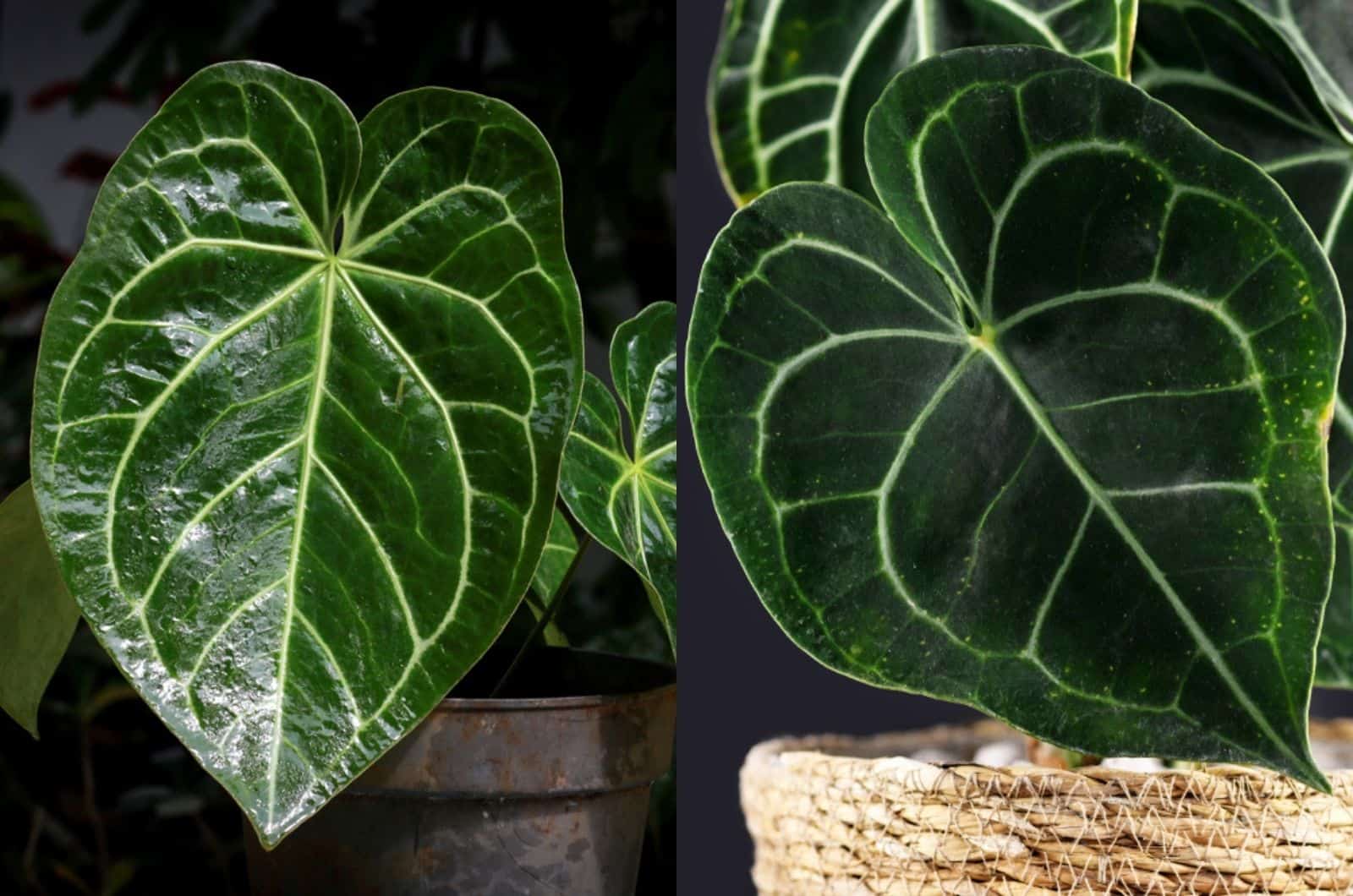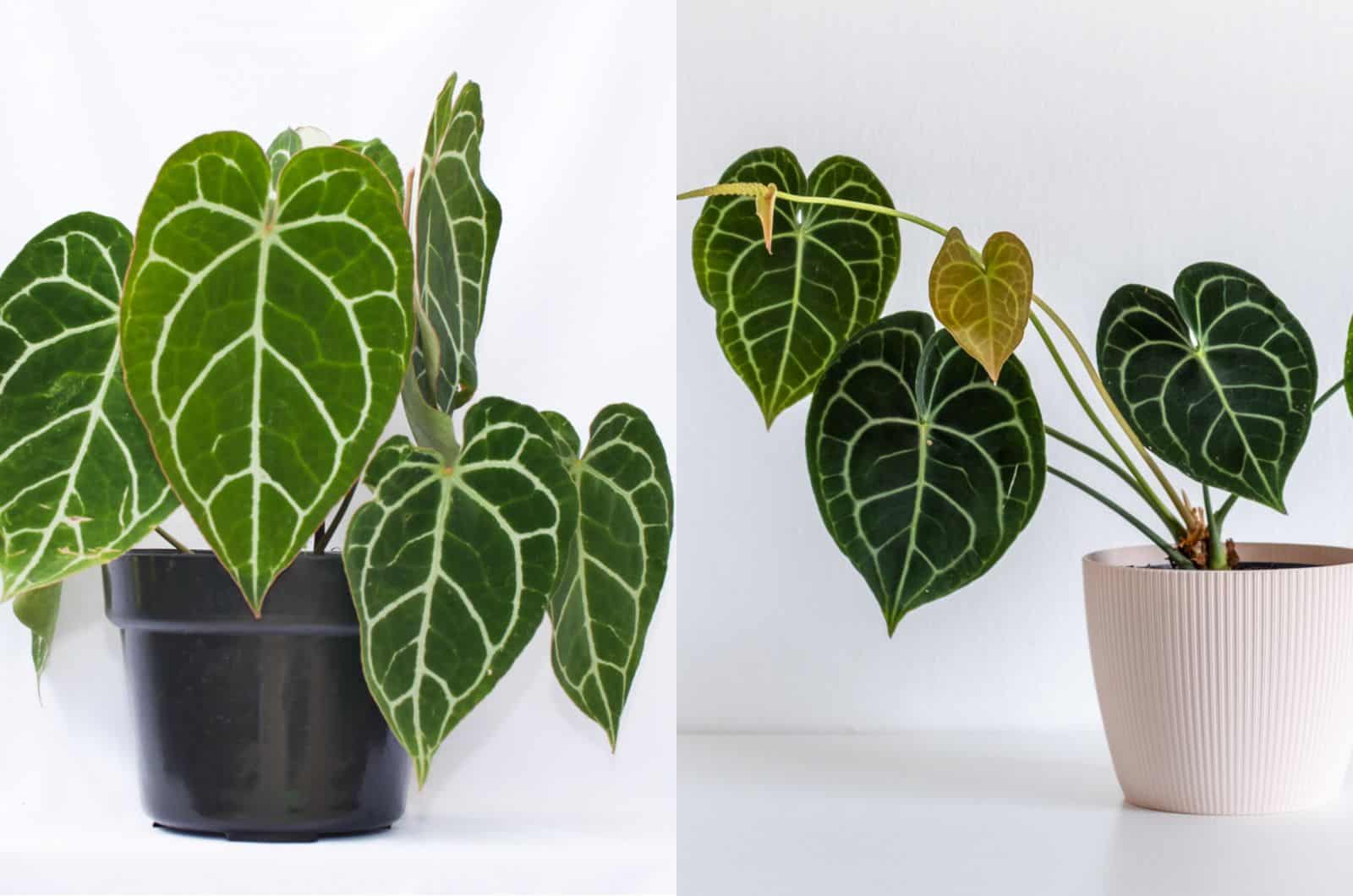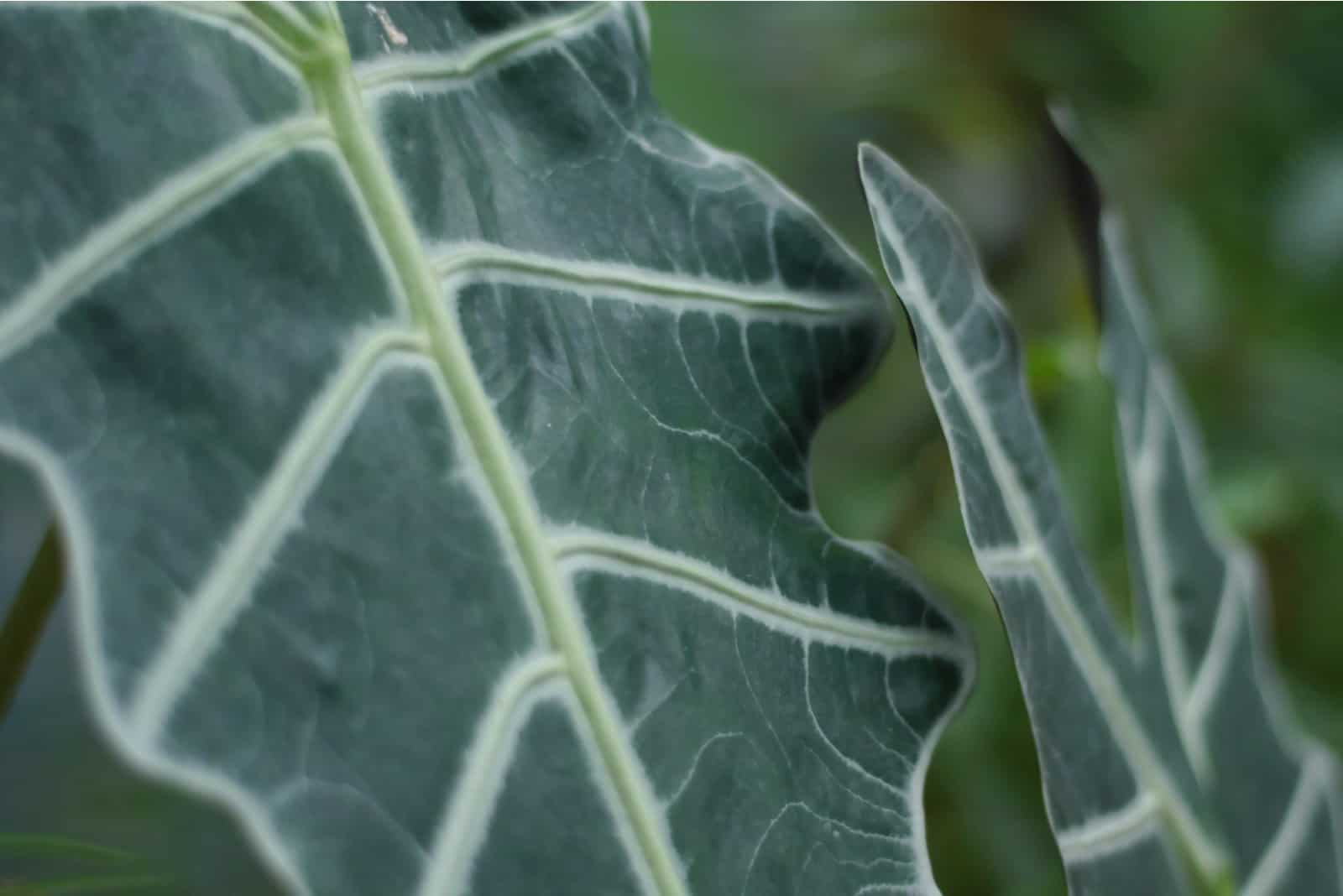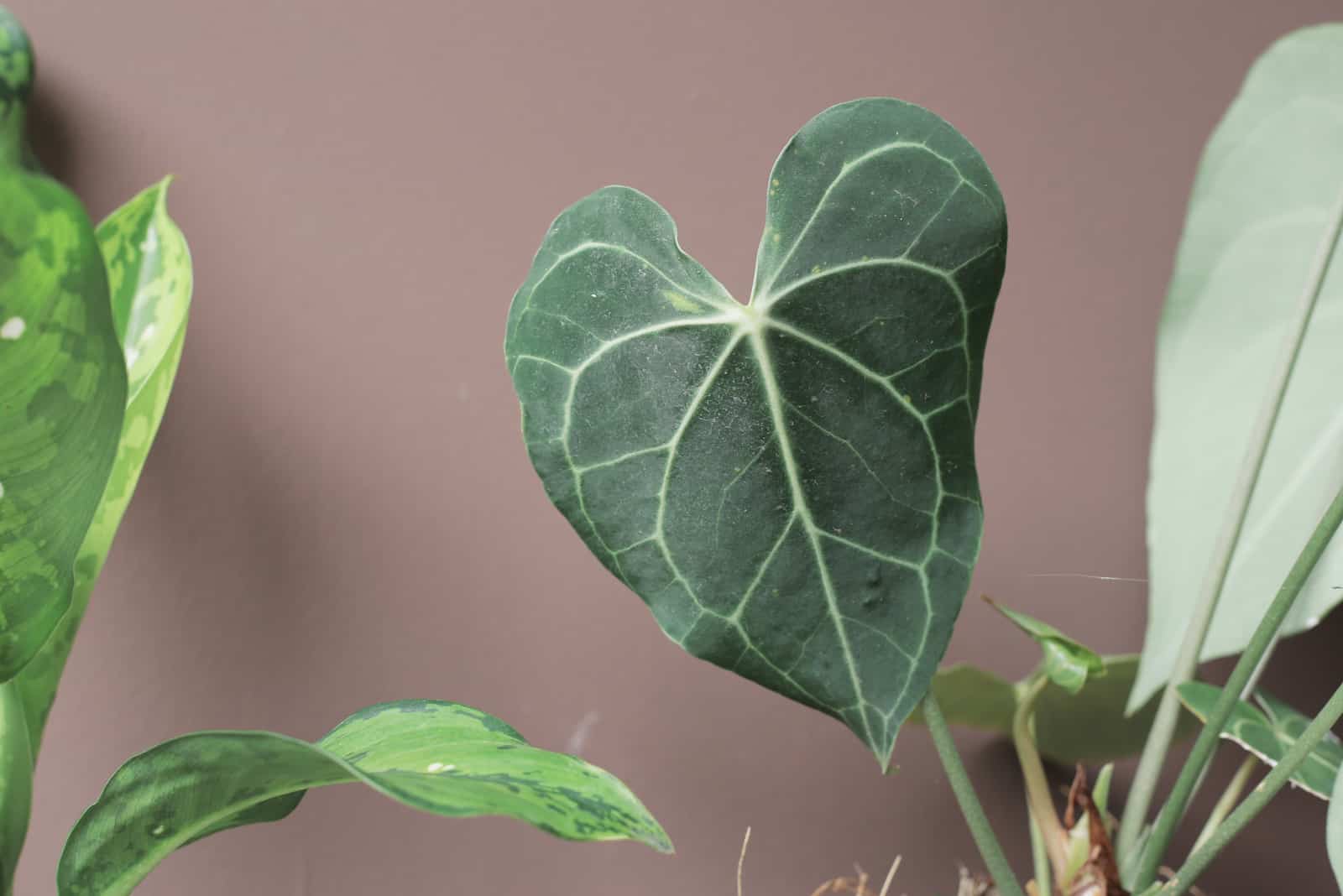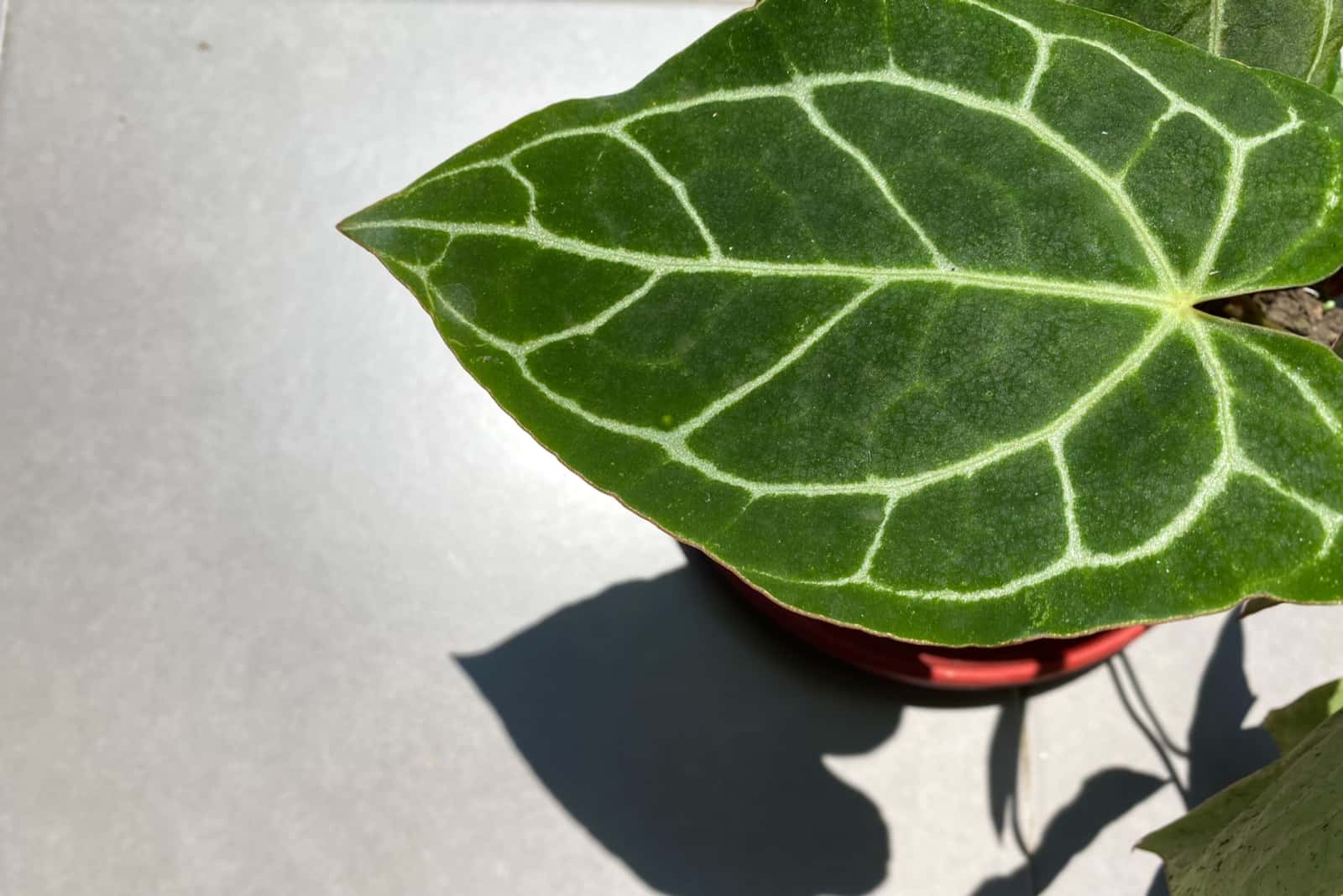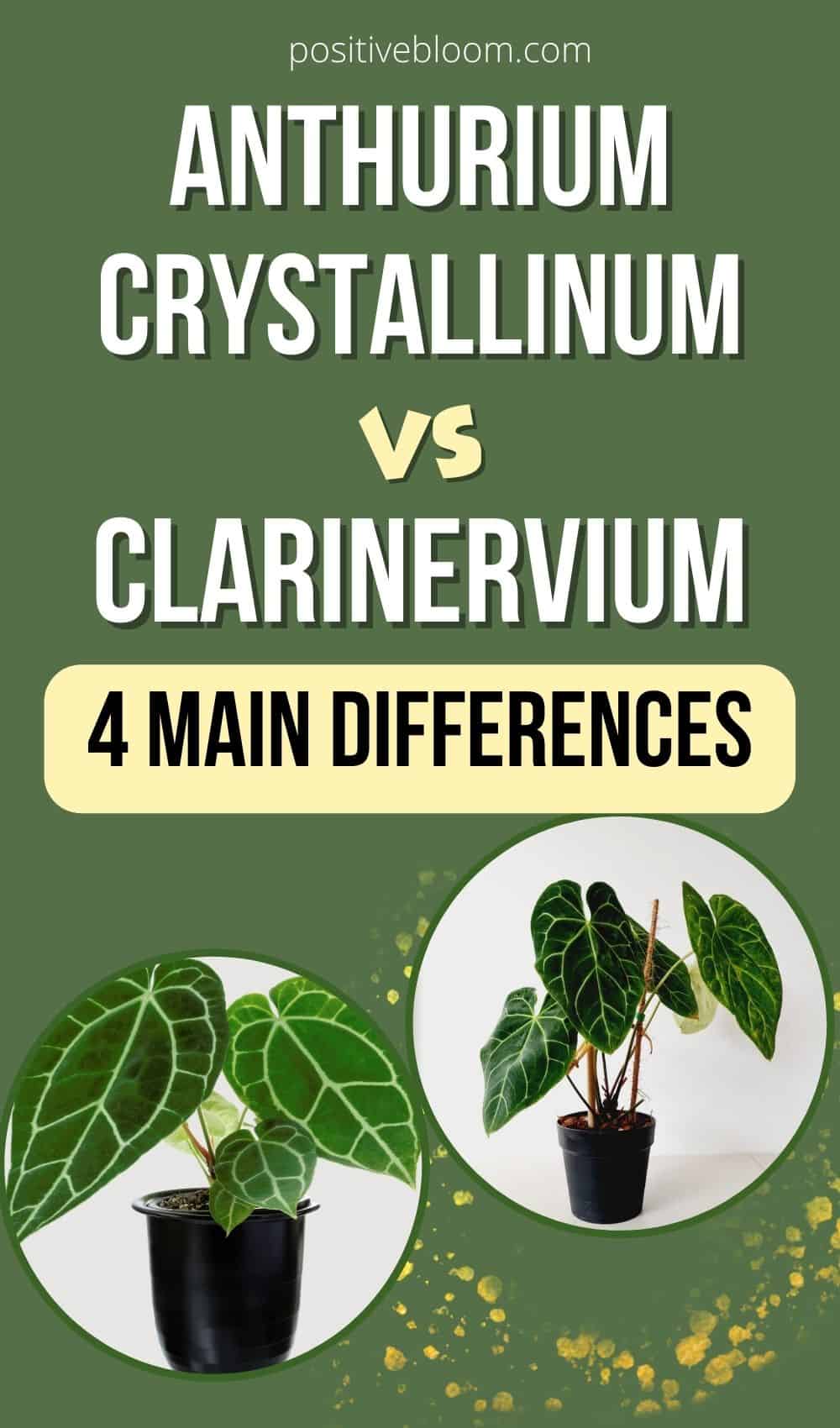Due to their appearance, Anthurium Crystallinum and Anthurium Clarinervium are commonly mistaken by new botanists.
Both plants belong to the family Araceae, of the Anthurium Species.
Their stunning appearance attracts many people, which is probably why these plants are among the most famous indoor houseplants.
In this article, we will learn the 4 main differences between these plants in an Anthurium Crystallinum vs Clarinervium comparison.
Additionally, you will learn some similarities, precisely the conditions both plants require to thrive, as well as some issues they might have.
First, some basic info:
[table id=12 /]Let’s get started!
Anthurium Crystallinum vs Clarinervium: How To Differentiate Between The Two
Although they belong to the same family and species, there are 4 key differences between these plants.
Anthurium plants are quite similar. Take a close look at your two Anthurium species, and if you spot any of the differences below, you have one Anthurium Crystallinum and one A. Clarinervium!
1. Growth Rate
The first difference between the Crystallinum and Clarinervium of the Anthurium species, is the growth rate.
The Anthurium Clarinervium grows way slower than the Crystallinum.
Even if they are grown in the same growing conditions, Clarienerviums will not grow as fast as Crystallinums.
The Crystallinum plant has more buds and aerial roots, which cause faster spreading. It is also easier to purchase this plant because of this rapid multiplication.
On the other hand, the Clarinervium plant’s slow growth and propagation will result in fewer leaves, which makes this plant harder to find and buy.
If you find this plant for sale, it will likely be more expensive.
2. Leaves
The Anthurium Clarinervium has dark green leaves, whereas the Anthurium Crystallinum’s leaves are brighter, making the pattern more visible.
The leaves of the Crystallinum are thinner and more prone to damage, and its white vein pattern is more complex compared to Clarinervium.
The Clarinervium has thicker and more robust leaves.
The Crystallinum has elongated heart-shaped leaves opposed to the Clarinervium’s velvety leaves, which are also heart-shaped. Still, the shape of the heart is more noticeable.
3 Color Of The Berries
The berries on the Anthurium Crystallinum are white at first, and when they mature they turn purple due to the greenish inflorescences encircled by green spathes.
On the other hand, the Anthurium Clarinervium has orange berries.
Additionally, Clarinerviums have many seeds, which results in larger berries. The Crystallinum only has one seed, which is why they flower and bloom less frequently.
4. Reproduction
The Crystal Anthurium reproduces vegetatively, whereas the Anthurium Clarinervium reproduces generatively.
The Crystal Anthurium reproduces by cutting and budding.
Unlike the Crystal Anthurium, the Clarinervium plant is reproduced generatively, which means that the number of propagated plants is lower.
We hope that you can now differentiate these two plants!
Let’s move on to the similarities between these indoor plants so you can know what you should pay attention to when growing them.
Similarities Between Anthurium Crystallinum And Anthurium Clarinervium
Both the Crystal Anthurium and Anthurium Clarinervium grow in the same conditions, so let’s learn about those conditions. This section will also serve as a care guide.
Humidity Conditions
Bear in mind that these are tropical plants, so you should do your best to imitate tropical conditions in your home.
Dry air can cause severe damage to these plants.
Perfect humidity levels range between 75% and 85%.
Pay close attention to moisture levels to avoid any complications.
If the humidity level is lower than it should be, you can increase it using a humidifier.
You can also increase moisture levels in the pot’s soil by using a pebble tray.
You can make your own pebble tray by filling a tray with water, adding pebbles, and placing the pot over the top of the tray.
Keep the plant away from air conditioners and vents because they dry out the air and reduce the humidity level.
Watering Schedule
Water requirements are the same for both plants.
From fall to spring, you should water the plants 1 or 2 times per week during the growing season. You can even increase watering to 3 times per week if required.
During the dormant season in winter, water your plants approximately every 7 to 10 days.
These plants are big fans of water, but that doesn’t mean they need to be constantly wet.
To check the moisture level and if the plants need watering, you can put your finger in the soil or use a wooden stick. If the soil is wet, it will adhere to the stick or your finger.
If you want to be sure, you can use a moisture meter.
Pay close attention to the amount of water because overwatering can cause severe problems like root rot, which will be explained in more detail in the ‘Common Issues’ section.
Light Conditions
As far as light requirements are concerned, both Anthurium Crystallinum and Clarinervium prefer bright, indirect light.
Avoid south-facing windows, and choose windows without direct sunlight.
Indirect sunlight will help the plants to grow healthily.
North-facing windows are the best choice, but north-facing windows do not receive enough light in certain climate zones.
Artificial light can be beneficial in these situations.
Type Of Soil
Both prefer slightly acidic soil with pH ranging from 5.5 to 6.8.
The best potting mix includes sphagnum moss, perlite, and bark (2:1:1).
The plants will also do well in aroid potting mix and in orchid growing soil.
Soil requirements also include a good drainage system, so choose a pot with drainage holes.
Unlike Philodendrons and Monsteras, with which soil has to completely dry between waterings, all species from this genus like Anthurium Chamberlainii, Anthurium Balaoanum, and of course, Crystallinum and Clarinervium require the soil to dry approximately 2 inches below the top of the soil between waterings.
Fertilization
After you transplant either of these plants, double the dose of nitrogen, phosphorus, and potassium.
Phosphorus will be beneficial for growing a robust root system.
Avoid over-fertilizing because it can damage the beautiful heart-shaped leaves of both plants.
The plants don’t need to be fertilized during winter.
During the growing season, apply fertilizer every 6 to 8 weeks.
Repotting
When it comes to the Anthurium Crystallinum vs Clarinervium discussion, one of the key differences is the growth rate, as was mentioned previously. The Anthurium Clarinervium grows slower than the Crystal Anthurium, but both plants grow faster in comparison to other Anthurium plants.
This said, until they mature, the roots of both plants will outgrow their pot quickly, which will give you the signal that it’s time to repot.
Common Issues
Although these plants are relatively easy to care for, that doesn’t mean things can’t go wrong.
Plant care is of great importance, and if you don’t fulfill all the requirements of these plants, issues are likely to occur.
The most common issues of Anthurium Crystallinum vs Anthurium Clarinervium are root rot, yellow or brown leaves, and pests.
Root Rot
The root rot is caused by overwatering.
To avoid root rot, adjust your watering schedule. Always check the moisture level in the soil, and if the soil is too wet, delay watering. On the other hand, it’s time for watering if the soil has completely dried out.
Yellow Leaves
Yellow leaves appear when the plants experience water or moisture shock.
Experienced botanists know that overwatering is the cause of yellow leaves more often than not.
The air spaces in the soil are filled with oxygen, and if the plants are overwatered the oxygen level will drop, causing the leaves to turn yellow.
Don’t water your plant when you notice yellow leaves as it can cause root rot. Always check the moisture level!
Brown Leaves
Brown leaves are caused by low humidity levels and insufficient light.
Air should not be too dry because the plants will be unable to extract nutrients from the soil if they don’t receive enough humidity.
On the other hand, if the plant doesn’t receive enough light, it will have dull leaves and veins and stunted growth.
The photosynthesis process can’t be completed if the light level is too low.
Put the plant near a window, but avoid direct sunlight because it will cause even more damage.
Pests
The most common pets affecting these Anthurium species are spider mites and scales.
Spider mites will cause the appearance of tiny spots on the undersides of the leaves that can be either white or brown. Use rubbing alcohol to remove them.
Scale insects look like shell bumps and affect the undersides of leaves and stems. You can also use rubbing alcohol to remove them.
FAQs
How can you tell the difference between Anthurium crystallinum and Anthurium Magnificum?
The difference between Anthurium Crystallinum and Magnificum is in their leaves and petioles. Anthurium Magnificum has darker and shinier green leaves and winged petioles.
What are the benefits of Anthurium crystallinum?
Anthurium Crystallinum is an air purifier, and it helps to remove harmful chemicals such as formaldehyde and ammonia. According to Feng Shui, this plant brings good luck in relationships.
Wrapping Up
This article discussing Anthurium Crystallinum vs Clarinervium will serve not only to help you differentiate between the plants, but also teach you some new information and how to care for them.
Both plants will be a perfect match for your living room.
Take proper care of both plants, and who knows, maybe you can make some money propagating Clarinervium!
Until next time!
Like this post? Share or pin it for later!

